User Interfaces
In this chapter, you will learn about
- Types of user interfaces
- Handheld, wall-mount, tabletop, and remote control technologies
- User interface issues
Our love of remote controls is evidenced by our viewing and listening activities. In fact, it is not unusual for someone to spend several minutes searching for a misplaced remote control, rather than taking a few seconds to just walk over to the TV, DVD player, VCR, or stereo to change the program, station, disc, or track.
Despite what this may say about us, when you’re working with a distributed audio or video system or a whole-house control system, managing the source or control devices can mean walking to a room that may be on the opposite side of a home. One of the primary justifications for installing an integrated home control system is convenience. And handheld remotes, keypads, and other local controls are some of the most important conveniences the system provides.
In this chapter, we take a look at the various types of controls that can be used with automated home systems, including how they work and what are the issues with different types of user interfaces.
Types of User Interfaces
Nearly all consumer electronics these days come with some type of remote control. This includes stereo equipment, televisions, DVD and VCR players, and even video cameras. In addition, home systems, such as lighting, audio, video and even computer systems can also be operated from some form of a remote control. Types of remote control devices range from simple to complex (and expensive) including:
- Handheld remotes and key fobs
- Keypads
- Touch screens
- Voice-activated controls
- Telephone
- Computer
- PDAs and Web pads
- Remote access devices
Handheld Remote Controls and Key Fobs
There are a wide variety of remote controls with many sizes, shapes, and functions. Here we are talking about wireless remote controls only. Essentially, any small remote control that will fit into a normal-sized person’s hand can be considered a handheld remote control. However, some of the remote controls that could be included in the handheld category are larger in size and are better categorized into the user interfaces that I describe below.
Handheld remote controls are usually infrared (IR) or radio frequency (RF) devices that are 1.5 to 3 inches wide and from 4 to 10 inches in length. There are models that control a single device and some that have the capability to control multiple devices, although only one at a time.
Figure 38-1 shows a basic single device, in this case a television, handheld remote control.

Figure 38-1: A single device handheld remote control
Photo courtesy of Universal Electronics, Inc.
Remote controls that are small enough to attach to a key ring are categorized as key fob remote controls. These types of remote controls are typically single device remote controls that are used to open doors, turn on lights, control appliances, and similar type functions in a home.
Most key fob remote control devices transmit RF signals to an RF receiver built into the device or devices they control. However, because this type of control typically has a fairly narrow broadcast range, they are considered to be line-of-sight devices.
Some key fob remotes are programmed to a single device, but replacement models are available that can be programmed to control any compatible device. Some can be set to control two devices, such as the garage door and the lighting system, at the same time.
Power line communications (PLC) key fob controls have the capability to control as few as one to as many as eight receivers and transceivers and directly control a device plugged into the receiver or use a transceiver communicate with a home automation controller using PLC signaling. Figure 38-2 illustrates a PLC key fob remote control.
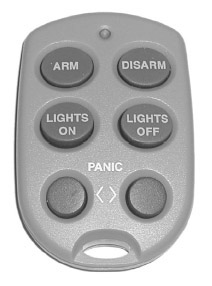
Figure 38-2: A PLC key fob remote
Keypad Controls
Although keypads have been covered in several places in this book, they have not been discussed in the context of their function as user interfaces. Keypad controls are typically wall-mounted devices that allow for a single control function, such as raising or lowering the volume of the speakers in a room or zone, or the ability to control multiple devices such as lights in a single zone or throughout the house.
Another type of handheld remote control is the IR devices that communicate with base units that are inserted into an AC outlet and send a PLC signal over the electrical lines to turn electrical devices, such as appliances, lamps, and the like, on or off (see Figure 38-3).
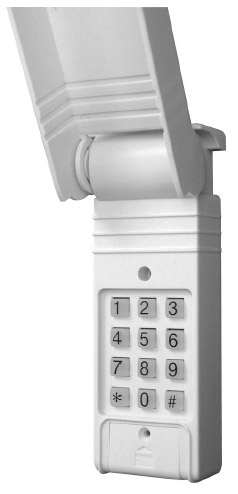
Figure 38-3: A wall-mounted PLC keypad control that can be used to control the power to an electrical device
Photo courtesy of Skylink Technologies Inc.
Like remote controls, keypads can have hard keys and soft keys, a single light-emitting diode (LED) or an LCD display, and they can be single function or multiple function controllers. Figures 38-3 and 38-4 show examples of the different levels and configurations of keypad controllers.
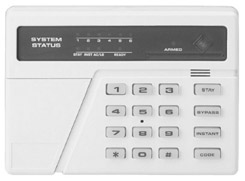
Figure 38-4: A multiple zone security controller with LED status lights
Photo courtesy of Honeywell International, Inc.

Figure 38-5: A wall-mounted touch screen keypad control
Photo courtesy of Home Automation, Inc.
Some keypad-style remote controls are full-color touch screen displays that are made to mount in or on the wall or sit on a tabletop like Figure 38-5. The unit shown in Figure 38-2 is a PLC device that communicates using RF signals to a base station plugged into a home’s AC circuits. Figure 38-4 shows a wall-mounted, hard-wired security system controller that is typically mounted on a wall.
Touch Screen Controls
When a user touches a touch screen with a finger, the resulting action is similar to pressing a button, or clicking a mouse. A touch screen device is a video display screen, either liquid crystal display (LCD) or cathode ray tube (CRT) that has been engineered to also serve as an input or interface device. There are two touch technologies that can be used, light pen (an external device) or touch overlay (an internal device), both of which output an XY coordinate signal. Of the two touch screen technologies, the touch overlay is by far the most commonly used touch screen system for residential systems.
Figure 38-5 shows a touch screen multiple-device controller that can either be hard-wired into a centralized home system controller or interfaced using RF or IR signals to a nearby receiver.
Touch Screen Operation
In most home touch screen devices, the display type is a resistive LCD screen that consists of a flexible outer layer, which is commonly plastic, and a rigid inner layer, which is glass or metal, with a layer of insulating stand-offs on a grid between the outer and inner layers. Both the inner and outer layers are coated on their inside surfaces with a metal oxide coating that conducts a low voltage charge. When a user presses the flexible outer layer, it makes contact with the inner layer, which is detected by the grid controller as a circuit closure. The controller alternates voltage between the upper and lower layers in such a way that it is able to identify the XY location on the grid where the user pressed the outer layer. The XY coordinate is supplied to the touch screen device’s controller for processing or transmission onto another device. Other less reliable touch screen technologies are available, but rarely are used on residential devices. They include acoustic wave, capacitive, near field imaging (NFI), and IR.
Touch screen devices are available as wall-mount and tabletop, as well as stand-alone devices that communicate with a base unit using IR or RF signals. The base unit can be self-contained or be connected to a home system controller using PLC or hard-wire connections. Examples of these devices are
- Wall-mount touch screen devicesAn example of a wall-mounted touch screen controller is shown in Figure 38-5. Wall-mounted devices can be small, with only a few touch screen “soft keys” or large with a multifunction, multilayer touch screen program.
- Tabletop touch screen devicesFigure 38-6 shows an example of a system table-top touch screen controller. This type of touch screen device is commonly used to control a whole-house system.
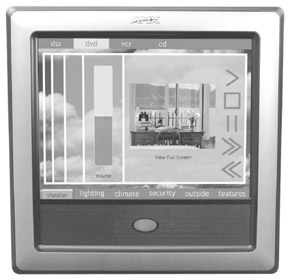
Figure 38-6: A multiple-device tabletop home automation controller
Photo courtesy of AMX Corp.
- Stand-alone touch screen devicesFigure 38-7 shows a stand-alone touch screen controller that operates either as a universal IR controller or as a part of a single or multiple zone control system.

Figure 38-7: A stand-alone touch screen controller
Photo courtesy of Koninklijke Philips Electronics N.V.
Touch Screen Programming
Many wall-mount and stand-alone touch screen devices include a number of preset soft keys. The soft keys themselves cannot be relocated on the screen, but the command or action assigned to each button, and its label, can be changed during a menu-driven programming and setup action.
More elaborate and more fully featured touch screen systems, such as tabletop devices and touch screen systems implemented on a personal digital assistant (PDA) or a tablet PC (see Figure 38-8), typically include a more sophisticated programming routine that allows some custom scripts and programming to be included.
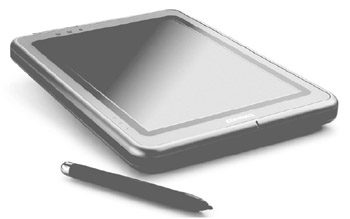
Figure 38-8: A tablet PC can be used as a remote control for a home automation system.
Photo courtesy of Hewlett Packard Company.
Voice Activated Remote Controls
If changing the channel on the television or controlling the volume of the stereo without getting up from your chair still involves too much physical effort, new remote control devices are entering the market that allow users to control a variety of devices using only spoken words. While these products seem perfect for the hopelessly lazy, the original intent was to assist disabled or infirmed consumers who are unable to operate a conventional remote control.
Voice-activated remote controls, like the one in Figure 38-9, are voice-recognition devices that digitize and store the sound wave pattern of spoken command words.
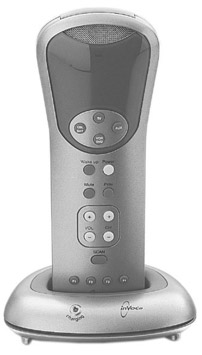
Figure 38-9: A voice-activated remote control
Photo courtesy of the Brookstone Company, Inc.
| Note |
Before most voice-activated systems can be used, the user must “train” the device or its controller by recording a list of command sounds or words. On most devices, just about any spoken sound can be recorded to control one of the remote’s functions, although most come with a list of as many as 60 suggested voice commands that can be recorded by as many as four family members. After the controller has been trained, whenever it receives sound, it searches through its database of recorded sound prints and when it finds a match, it performs the action associated with that sound, just as if a button had been pressed on a keypad. |
Voice-activated remote controls (see Figure 38-9) typically operate either through recognized voice commands or through their keypad. Voice-activated controls continuously receive sounds from their immediate vicinity. Each sound it receives is then converted to a digital pattern and matched to stored digital images of prerecorded sounds. Should the digital image of a received sound match a digital image of a recorded sound, the function or action associated with the recorded sound is activated. For example, if the sound recorded to control turning on a TV set is “Picture,” whenever the person who recorded this command speaks the word “picture,” the voice-activated remote transmits an IR signal to the TV to turn it on. The words used to designate the remotely controlled actions should be chosen carefully so that normal conversation doesn’t create a series of random electronic device events.
Telephone Controls
If you are away from home and you want to arm your security system, you can turn on a few lights, or interact with any of the other automated functions in your home, if the home automation control system is configured for it. These functions can all be done by the homeowner simply placing a telephone call to the home and pressing a few phone number pad keys.
Many home automation controllers have either built-in or optional phone control modules that allow a homeowner to access the controller and enter commands using a telephone number pad on a phone either inside or outside the home after entering a security code.
Another approach to using a telephone as a remote control is a group of newer devices that combine a cordless telephone with a universal remote control (see Figure 38-10). The handset of these devices doubles as both a cordless telephone handset and a multiple-device IR remote control.
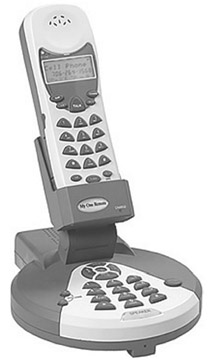
Figure 38-10: A cordless telephone with a universal remote control built into the handset
Photo courtesy of Innovative Telecom Industries.
Computer Controls
Home systems can be controlled through a personal computer through the installation of specialized software and a few peripheral devices added to the computer, such as IR or RF transmitters, Electronic Industries Alliance/ Telecommunications Industry Association (EIA/TIA) 232 or parallel ports, PLC interfaces, Universal Serial Bus (USB) or Institute of Electrical and Electronic Engineers (IEEE) 1394 ports, and the like. A PC can be used to control a home system through a variety of interfaces:
- AutomationHome automation control software can convert a PC into a home automation controller that can be connected into the home automation network in very much the same way as a stand-alone home system controller. By definition, a PC can be connected into the UTP and coaxial wiring of a home’s structured wiring and used to control the home system by transmitting control commands over the cabling. However, a PC can also be interconnected into a PLC network to transmit control commands across the AC wiring of the home to PLC controllers and modules throughout the home. The type of network system installed will dictate the type of software system used on the PC.
- External control and communicationA PC connected to the Internet provides the option for a homeowner to access the home automation system running on the PC from outside the home using the Internet. This allows the homeowners to check the system status and to make changes to the security, lighting, or other systems or be alerted to certain events while they are away from home. Some of the home automation control software systems include features to send e-mail or to dial a pager or cell phone in the event of an alert.
- PC controlThe computer user can use specialized software to directly control the lighting, appliances, and other PLC devices throughout the home by indicating the desired result to the software that then generates the appropriate commands to carry out the user’s wishes.
- Remote controlWith the appropriate transmitters (IR or RF) attached, a PC can also be used as a remote control device to control the on/off switch and other functions of devices within its line of sight (IR) or broadcasting range (RF). Specialized software is required to facilitate this control along with an IR or RF transmitter.
In general, the software used for home automation or device control is designed to run on one or more specific operating systems. However, in nearly every case, the software uses a graphical user interface (GUI, pronounced “gooey”) that allows functions to be selected using a mouse. Figure 38-11 illustrates a Lindows (Linux Windows) GUI screen.

Figure 38-11: The Lindows GUI
Image courtesy of Lindows.com, Inc.
PDAs and Web Pads
Personal digital assistants (PDAs), those handheld appointment books, notepads, phone directories, and personal information manager devices, can also be used as a remote control for several consumer electronic devices, such as a TV, VCR, CD, DVD, and even home control systems. By adding special software (and perhaps a hardware chip) such as the Nevo software from Universal Electronics and proprietary offerings from Sony and Palm, a PDA can be used as a full-featured, customizable universal remote control. PDA remote control systems display (see Figure 38-12) stylus-selectable soft-keys on the PDA display that can be programmed to virtually any device. Communication from the PDA can be via IR or wireless RF that transmits using the IEEE 802.11b wireless communications standard, also called Wireless Fidelity (Wi-Fi). The benefit of using 802.11b communications in place of IR or other short-range RF technologies is the device then has a range of about 330 feet (100 meters). To complete the wireless remote control system, the central home automation controller needs to be connected to an 802.11b network access point (NAP) that supports Ethernet networking.
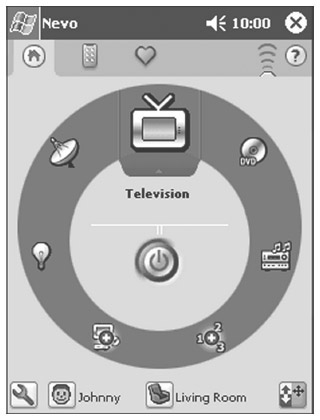
Figure 38-12: A PDA configured as a home automation system remote control with the NEVO add-on software
Photo courtesy of Universal Electronics, Inc.
A Web pad is a generic term used for Tablet PCs and other wireless self-contained, handheld computers. Web pads (see Figure 38-8 earlier in the chapter) are generally full-featured PCs that allow users to surf the Internet, receive and send e-mail, and perform most PC-based functions, including data entry. By loading software on the Web pad, the computer can become a control device and touch screen.
Web pads are wireless RF devices that transmit using the IEEE 802.11b wireless communications standard, Wi-Fi. Just like the PDA with wireless control, Web pad devices, or the central home automation controller it is controlling, need to be connected to an 802.11b NAP that supports Ethernet networking.
Remote Access Control
It is also possible to control an automated home system remotely, in this case from outside the home, using the Internet or a connection from one PC to another. However, this does require some special software, in most cases.
If the home automation system is controlled by software running on the home computer network, then all that is required is PC remote control software, such as pcAnywhere from Symantic or GoToMyPC from Expertcity. This allows you to either dial up using a modem-to-modem connection or a broadband connection. You then access the home network either directly or over the Internet, as illustrated in Figure 38-13.
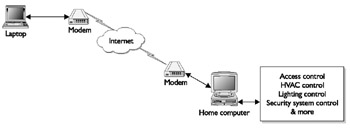
Figure 38-13: A home automation system can be managed and controlled remotely using a modem to access the home controller or on a home network.
Once the remote PC is connected to the home network, the home automation controller can be managed and the settings changed on any of the subsystems linked to the controller.
Special telephone modem interfaces are also manufactured for specific home automation subsystems. For example, Honeywell offers a product called the Telephone Access Module (see Figure 38-14) that allows remote computer access to control the Heating, Ventilating, and Air-Conditioning (HVAC) subsystem of a home.
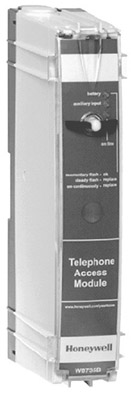
Figure 38-14: The Honeywell Telephone Access Module is used to provide remote telephone modem access to a HVAC system.
Photo courtesy of Honeywell, Inc.
Hands Free Controls
When you hear the phrase hands-free, you must wonder how the control can happen if you don’t use your hands in some way, like touching a handheld remote button, keypad, or touch screen. Hands-free means the control is triggered by motion sensors located throughout the house. They sense the presence of someone within their scan pattern and act according to a preset plan initiated by the input of a command through traditional user interfaces earlier. An example would be turning on the music in the kitchen on the wall keypad, then when you walk down the hall from the kitchen and into the living room, the lights and music come on as you enter the room and go off in the kitchen because no one is there. Later, when you leave the living room and head back to the kitchen, the reverse occurs: lights and music go off in the living room and on in the kitchen.
Control Characteristics
There are some characteristics that are common to all types of remote controls, regardless of their size, their shape, or the device or devices they control. The most common of these characteristics are
- Hard keyA key or button on the remote control activates a fixed function and is linked to a single command code. The term hard key is derived from “hard-wired.” Hard keys are permanently labeled on the face of the remote or on the key itself for the function it performs. As shown in Figure 38-15, the hard keys are the buttons that have been printed or silk-screened with their associated function.
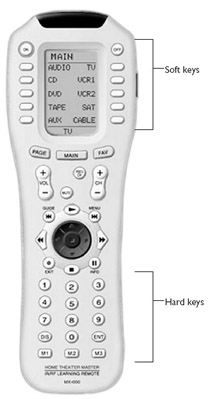
Figure 38-15: Hard keys and soft keys on a remote control device
Original photo courtesy of Universal Remote Controls, Inc.
- Soft keyOn some remote controls, especially multiple device controls (see Figure 38-5), the buttons on the side of the display screen are not typically preassigned as hard keys. These buttons are “soft keys,” and their functions are assigned logically, depending on the device selected for control. The soft key’s function is displayed adjacent to the button on the screen. When a soft key is pressed, it performs different functions for the device currently selected depending on the settings displayed on the remote’s user interface.
- User feedbackOn many remote controls, the user feedback is only an LED that lights when a button is pressed and a command code is activated. On other remote controls, an LCD is used to give visual feedback and can display status messages, command functions, show the device menu, and, on some remote devices, assign the functions of soft keys. Some models have auditory feedback, such as a click or sound when the button is engaged. On some models, the user interface is both hard keys and a touch screen offering a full array of soft keys.
The operating characteristics that all forms of remote control devices use to determine if a particular type of remote control is appropriate in a given situation are
- DisplayDepending on the type and size of a remote control device, its user feedback display could be as simple as a single LED or an LCD display, or as advanced as a full-color touch screen display.
- Ease-of-useA remote control should be easy to use, intuitive, and its keypad should be logically laid out, including its hard keys and soft keys. Related keys should be grouped together and clearly labeled. Consistent placement of the same keys on every keypad or screen (LCD or touch screen) is critical for ease of use. The graphics should be easy to read and pleasing to the eye along with being easily read by those who might be “small font-size challenged.”
- Two-way versus one-way communicationsMany higher-end remote controls (wall-mounted keypads and tabletop controls) are two-way devices that are able to display system feedback and status information. Most handheld remote control devices are capable of only one-way communications. The benefit of two-way communication is obvious; you know if the command you sent was received and gave the desired result. With one-way communication, you will often hear the saying “Send and pray” because you have no idea if the command sent was received and executed.
Remote Control Technologies
Handheld remotes come in a wide variety of shapes and sizes, but only two types of signal transmission technologies are used:
- Infrared (IR)
- Radio frequency (RF)
The basic difference between an IR remote control and an RF remote control is line-of-sight and operating range. An IR remote control uses a light beam to communicate with the device being controlled and must have a direct line-of-sight to operate within a fairly limited area. On the other hand, an RF remote control broadcasts radio waves and doesn’t require a line-of-sight. In fact, many RF remotes don’t even need to be in the same room as the devices they control, because they have a much larger operating range.
IR Controls
The core technology of an IR device is, of course, IR signaling. Infrared light is invisible light that is just below the red band of the visible light spectrum. On virtually all IR devices, a red glass or plastic lens or filter is placed over an LED to produce the red color most people associate with IR devices. Figure 38-16 shows an IR remote control and its base unit receiver.
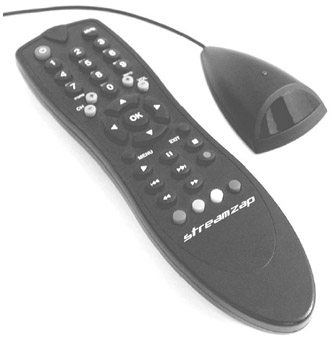
Figure 38-16: An IR remote control and a base unit
Photo courtesy of Streamzap, Inc.
IR Command Codes
Each button on an IR remote control’s keypad (see Figure 38-17) is associated with a command code. When a button is pressed, the circuitry inside the remote modulates the frequency of the light beam to send the number associated with its command function for that button in a binary-encoded format. For example, if the number one is pressed on the keypad, the remote modulates the light beam to send the command value of two as a binary number.

Figure 38-17: Each button on an IR remote control has a command code associated with it.
Photo courtesy of Intrigue Technologies, Inc.
Command Code SetsUnfortunately, no standard command code set exists and many manufacturers use a proprietary code set to control their devices. The Infrared Data Association (IrDA) has developed a standard coding scheme for computers and peripheral devices, but in the home entertainment market, several different command code sets are in use. Table 38-1 lists a sample of IR command codes used by the Sony Corp for its television systems.
|
Command Code |
TV |
DVD |
|---|---|---|
|
0 |
1 |
1 |
|
3 |
4 |
4 |
|
11 |
Enter |
Enter |
|
14 |
Channel guide |
Return |
|
16 |
Channel up |
Search reverse |
|
19 |
Volume down |
Channel up |
|
21 |
Power |
Power |
|
30 |
Brightness up |
Program |
|
43 |
Clock, time |
Play mode |
|
59 |
Jump, last |
Step forward |
|
66 |
Video 3 select |
Disc 3 |
|
78 |
Cable select |
Mega control |
|
96 |
Menu, guide |
Slow reverse |
|
107 |
Auto program |
AV center |
Notice in Table 38-1 that the codes for a television and the codes for a DVD have only a few basic commands in common, demonstrating that even within the products of a single manufacturer, the IR command codes can vary for different devices.
Command Code ModulationThe most common method used for modulating an IR signal combines amplitude key shifting and turning the carrier on and off. When a button on the keypad is pressed, the command value associated with it is generated by the circuitry inside the remote and a modulated signal where the frequency is raised and lowered to represent the binary digits (see Figure 38-18) is sent to the light producing circuitry. The light-emitting part of the remote then transmits the command code values by turning the carrier frequency on and off in a pattern that represents a one, zero, or the short spaces between the digits and the long spaces separating the commands.
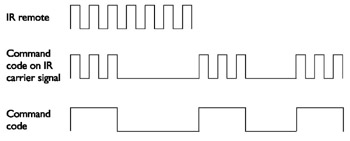
Figure 38-18: The command code is represented in a modulated signal.
Binary Number System
The binary number system represents values using ones (1) and zeroes (0) to indicate whether a position, which has a value of two to a certain exponential power, is included in the number being represented or not.
For example, the binary number 101 indicates that 2 to the power of 0 and 2 to the power of 2 are included in the value it represents, which in this case is the decimal number 4. The positional values of a binary number are listed in Table 38-2.
|
Position in Binary Number (Right to Left) |
Power of Two |
Decimal Value |
|---|---|---|
|
8 |
27 |
128 |
|
7 |
26 |
64 |
|
6 |
25 |
32 |
|
5 |
24 |
16 |
|
4 |
23 |
8 |
|
3 |
22 |
4 |
|
2 |
21 |
2 |
|
1 |
20 |
1 |
In an 8-bit binary number, the positional values of each bit are as follows:
|
27 |
26 |
25 |
24 |
23 |
22 |
21 |
20 |
|
128 |
64 |
32 |
16 |
8 |
4 |
2 |
1 |
When a one is present in a position, it indicates that the positional value of the position is included in the number represented. For example, in the number 00010010, the values included are
|
27 |
26 |
25 |
24 |
23 |
22 |
21 |
20 |
– Powers of two |
|
128 |
64 |
32 |
16 |
8 |
4 |
2 |
1 |
– Positional values |
|
0 |
0 |
0 |
1 |
0 |
0 |
1 |
0 |
– Binary digits |
|
0 |
0 |
0 |
16 |
0 |
0 |
2 |
0 |
– Included values |
So, in this example, 00010010 represents 16 plus 2, or 18.
Using the information in Table 38-1, the IR command code of 18, which is volume up on a Sony system, would be modulated and transmitted as the binary value of 10010.
RF Controls
Radio frequency devices, including remote controls, emit an alternating current electromagnetic field (radio wave) using a wide range of frequencies and wavelengths. RF devices, such as cordless and cellular telephones, televisions, radios, baby monitors, and most garage door openers, are found in most homes.
A garage door opener is a commonly used example of an RF remote control. When the button on the handheld device is pressed, the unit transmits a radio wave signal in a fixed frequency. The receiving device is searching for signals in just that frequency and when it detects the right radio waves, it closes the contact, which opens or closes the door. Of course, this type of system isn’t foolproof because the garage door opener’s receiver has no way to sense the identity of the source of the signal, only that it was in the proper frequency.
RF remote control devices include a transmitter with an encoder circuit and the controlled device includes a receiver and a decoder circuit. The operation of an RF remote control is very similar to an IR remote control (discussed earlier in the chapter). Pressing a button on the remote activates the encoding circuit and the transmitter sends out radio waves. The receiving device decodes the transmitted signal and applies the command transmitted.
Most handheld RF remote control systems, especially the all-in-one and universal models, replicate the IR command signals associated with each device controlled after receiving the RF command. Because so many consumer electronic devices are equipped with IR receivers for use with IR remote controls, to use an RF remote control with any IR device, the RF signal must be converted into an IR signal, as illustrated in Figure 38-19.
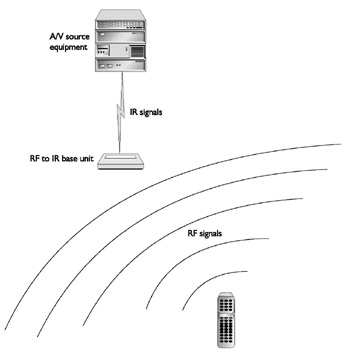
Figure 38-19: The operations of an RF to IR base unit and remote control
An RF remote control is typically a universal or an all-in-one device with the capability to control up to ten different source devices from anywhere in a home. The remote control unit communicates using RF signals to the base unit (see Figure 38-20) placed in a line-of-sight to the source devices to be controlled. The RF base then issues IR control signals to the source device selected on the remote control.

Figure 38-20: An RF-to-IR base unit
Photo courtesy of Onkyo USA Corp.
RF remote controls can also be integrated with PLC systems to control centrally located devices such as those that change the media (music or video) being delivered to a room or zone. These systems work much the same way as the universal remote control described in the preceding paragraph. RF receivers are either base stations like the one shown in Figure 38-20 or they are built into wall-mounted keypads, switches, or just receivers that convert the RF signals into IR signals that are PLC based. These signals transmit over the AC lines in a home to another PLC device that converts the PLC-based signal into an IR signal that is “flashed” to the equipment to be controlled.
Review
Nearly all consumer electronics and most home control systems include some form of a remote control. Types of remote controls include handheld remotes and key fobs, keypads, touch screens, voice-activated, telephone, computers, and PDAs and Web pads.
A small remote control that fits a normal-sized person’s hand is considered a handheld remote control. Handheld remote controls are usually IR or RF devices that range from 1.5 to 3 inches in width and from 4 to 10 inches in length. Some models control a single device and some control multiple devices one at a time.
Keypad controls are wall-mounted devices that allow for a single control function or the ability to control multiple devices. Keypadds have hard keys, soft keys, or both as well as one or more LED indicators, and some have LCD isplays.
A touch screen device is a video display screen engineered to also serve as an input or interface device. Most home touch screen devices use resistive LCD screens. Other touch screen technologies are acoustic wave, capacitive, NFI, and IR.
Voice-activated remote controls are voice-recognition devices that digitize and store the sound wave pattern of spoken command words. After a voice-activated control is “trained,” it searches through its database of recorded sound images for any sound it receives. If it finds a match, the action associated with that sound is activated.
Many home automation controllers have either built-in or optional phone control modules that can be used to access the home system controller and enter commands over a telephone.
Home systems can also be controlled through a PC with specialized software and the appropriate peripheral devices used to execute the desired commands. PCs can be used to control in four ways: automation, external control, PC control, and remote control.
PDAs and Web pads can be configured for use as remote control devices. A Web pad is a generic term used for tablet PCs and other wireless self-contained, handheld computers. It is also possible to control an automated home system remotely from outside the home, using the Internet or a connection from one PC to another. However, this does require some special software, in most cases. Special telephone modem interfaces designed to work with home automation systems are also available.
Several characteristics are common to all remote controls: hard keys, soft keys, and user interfaces. Remote controls use two types of signal transmission technologies: IR and RF. The difference between an IR remote control and an RF remote control is the line-of-sight and operating range. The core technology of an IR device is infrared light. Each button on an IR remote control’s keypad is associated with a command code. RF devices emit an alternating current electromagnetic field (radio wave) using a wide range of frequencies and wavelengths. RF remote control devices include a transmitter with an encoder circuit and the controlled device includes a receiver and a decoder circuit. Pressing a button on the remote activates the encoding circuit and the transmitter sends out radio waves. The receiving device decodes the transmitted signal and applies the command transmitted.
Questions
- What are the two communications technologies generally used by handheld remote controls?
- IR
- PLC
- RF
- Bluetooth
- Which of the following communications technologies can be used together in a remote control system?
- IR
- PLC
- RF
- HomePNA
- What type of remote control key has a fixed function and is linked to a single command code?
- Hard key
- Soft key
- Touch screen key
- Virtual key
- What action must be taken before a voice-activated remote control is fully operational?
- IR range test
- RF range test
- It must be trained.
- None of the above; voice-activated controls are ready for use out of the box.
- Which of the following can be considered to be remote control devices?
- PDAs
- Touch screens
- Key fobs
- All of the above
- What is the common term used for a tablet PC used to control a home automation system?
- PDA
- Notebook PC
- Laptop PC
- Web pad
- What are the two ways that a PC outside the home can access a home automation controller?
- By modem
- Hard-wired
- Over the home network
- Via the Internet
- What is the operating range of a wireless 802.11b system?
- 3 meters
- 30 meters
- 50 meters
- 100 meters
- Which of the following is not a commonly used display type on keyboard controls?
- LCD
- CRT
- LED
- Plasma
- A PC can be used as a system controller with which of the following system types?
- PLC
- EIA/TIA 232
- RF
- IR
- All of the above
Answers
- A and C. PLC communicates over household AC wiring, but is not directly used in remote controls, and Bluetooth is a type of RF technology used to create a PAN.
- A, B, and C. IR and PLC can be used together to access centralized devices from anywhere in a home. RF has the operating range to provide remote access throughout a home. HomePNA is not used for remote control.
- A. A hard key is in effect hard-wired to a specific function. Soft keys and touch screen keys are virtually the same, can be programmed by the user to a desired function, and are typically aligned with a display that indicates their function.
- C. Training a voice-activated device involves recording the user’s spoken voice for a series of command words.
- D. Any device that has some control over another device’s operations, configuration, or function can be considered a remote control.
- E. Actually, all of the devices listed could be used as remote controls with a home automation system.
- A and D. Once a connection is made to the system controller or to a home’s data network, the effect is the same as if the remote unit were directly connected to the controller or network from within the home.
- D. This is the technology used with PDAs and Web pads.
- D. Plasma screens are being used in television monitors, but they have not yet made their way into user interfaces on keypad controls.
- E. All of the choices can be interfaced to a PC equipped with system control software and the appropriate interface ports.
Part I - Home Technology Installation Basics
- Wire and Cable Basics
- Connector Types and Uses
- Wiring Installation Practices
- Codes, Standards, and Safety Practices
Part II - Structured Wiring
- Infrastructure Wiring Basics
- Planning a Structured Wiring Installation
- Rough-In Installation
- Trim-Out Installation
- Troubleshooting Structured Wiring
Part III - Home Computer Networks
- Computer Network Basics
- Computer Network Hardware
- Computer Network Software
- Designing and Installing a Computer Network
- Troubleshooting a Home Network
Part IV - Audio/Video Systems
- Distributed Audio System Basics
- Designing and Installing Distributed Audio Systems
- Distributed Video Basics
- Designing and Installing Distributed Video Systems
- Troubleshooting Audio Systems
- Troubleshooting Video Systems
Part V. Home Lighting Management Systems
- Home Lighting Basics
- Home Lighting Devices
- Designing a Home Lighting Control System
- Installing a Home Lighting Control System
- Troubleshooting and Maintaining Lighting Control Systems
Part VI - Telecommunications
- Home Communication System Basics
- Designing and Installing a Home Telephone System
- Troubleshooting a Home Communication System
Part VII - HVAC and Water Management
Part VIII - Security System Basics
- Security System Basics
- Designing a Home Security System
- Installing a Home Security System
- Troubleshooting and Maintaining a Home Security System
- Home Security Surveillance Systems
- Home Access Control Systems
Part IX - Home Technology Integration
- Defining Users Needs and Desires
- User Interfaces
- Home Automation Controllers
- Programming
- Integrating the Connected Home
- Other Home Technology Integration Devices
Part X - Appendices
EAN: N/A
Pages: 300
